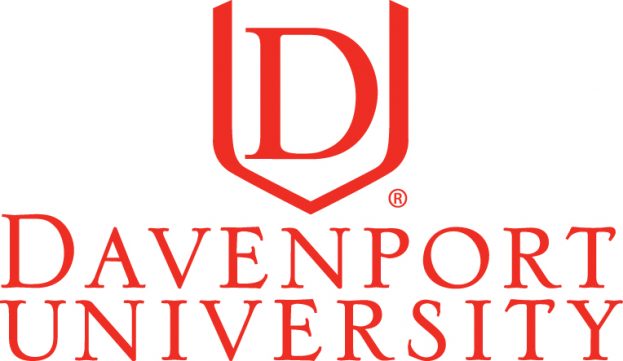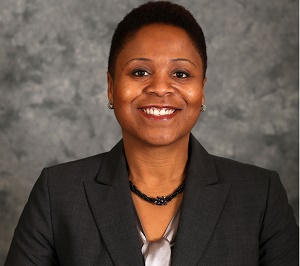
Diversity Dashboard spoke to Dr Rhae-Ann Booker, Executive Director of Diversity, Equity and Inclusion to hear more about their work to embed inclusion. 
How important is diversity to Davenport, and what value does it bring?
For us, DEI is not a fad, but a transformative framework for the way we provide education as we equip and support faculty, staff and students to create and sustain inclusive excellence at DU. Our end goal is inclusion. When people feel valued, understood, they can be themselves, and can fully contribute to the organisation, everyone wins. Effectively leveraging diversity effects our bottom line. We find our students and employees are more satisfied, our employee morale and retention are stronger, and the disparities in student outcomes across different groups (e.g. retention rates) are lessened.
In 2016, DU celebrated its 150th year of providing a career-focused education. We have campuses located across Michigan and online AND serve about 8,000 students pursuing careers in business, technology, health and urban education. DU is also a successful partner to corporations and organisations throughout Michigan and beyond. We provide degree programs and custom training and certification programs that help their employees continue to grow and succeed in their careers.
In 2009, diversity, equity and inclusion (DEI) was specified as one of 10 strategic priorities providing more explanation of what DU will look like and how we will function in support of our university-wide vision. Moreover, DEI was weaved throughout the supportive, foundational structures of the university.
The purposeful positioning of this strategic priority denoted DEI as critical, not peripheral, to achieving our mission.
Many organisations struggle with representation at the highger grades. Is diversity reflected at all levels of the university faculty?
The demographics of DU faculty and staff reflect a broad mix including different races, nationalities, faith traditions, ages, political affiliations, sexual orientations, gender identities, physical abilities, perspectives, and talents. From our senior leadership to middle management to front line staff, DU has a diverse body of leaders enabling us to build organisational capacity and capitalize on opportunities for ongoing learning from one another. At the same time, we do regularly review our demographic makeup identifying needs and executing strategies for closing any gaps.
In the United States of America, race and gender are two of the most commonly collected and reported diversity dimensions in higher education and beyond, although the aforementioned list represents equally, if not, more important aspects of human diversity.
You recently won an award for your Diversity, Equity and inclusion council. How did this come about?
For the second consecutive year, we received the 2017 Employee Resource Groups & Council Honours Award for the work and progress of our DEI Council, an inter-campus, cross-functional advisory and working group of DU faculty, staff and students working closely with myself and the team. Out of more than 3,300 applicants, we placed in the top 10 earning DU membership in the national DEI Leaders’ Circle.
At DU, we regularly seek input from external organisations about our DEI efforts. Periodically applying for awards has provided us with low-cost expert feedback helping us to benchmark our work locally and nationally and to discover areas for improvement.
What are Davenport’s plans for the future regarding inclusion?
We view DEI as less of a destination with a finite end, but more as the way we go about our work, interact with one another, and lead and participate throughout the world. We envision DEI being owned by all members of our community and reflected in their practices, goals, and outcomes. In doing so, DU will be equipped to respond to and leverage changing demographics; more effectively educate and equip our students who reflect the rich diversity of our world; and forge mutually beneficial collaborations with individuals and organisations who share our vision.
In 2009, our senior leadership courageously and boldly proclaimed DU would be the leading example of a diverse and equitable organisation, and we are committed to achieving this vision.
What advice would you give to other universities about strengthening inclusion? (top tips)
For strengthening inclusion within higher education, I recommend four tips:
- Understand your organisational culture.
Within every organisation, there are predominant beliefs, values, norms, and common practices. An understanding of this culture is fundamental to determining how best to position inclusion so it becomes a known vital building block of the very institution itself, and not a stand-alone initiative.
- Determine your approach.
Organisations define and go about inclusion in similar and different ways. Based on your understanding of your organisation, select or develop the approach that fits who you are and be open to making modifications where needed. Take the time to study the wealth of inclusion research and best practices that is available, and apply this learning to your context.
- Build ownership.
Within higher education, inclusion efforts can easily be siloed and marginalized, if not overlooked altogether. An organisational approach like DU’s requires ensuring everyone sees themselves as contributors to and reaping the benefits of inclusion. The goal of building university-wide ownership should undoubtedly inform institutional and individual planning and goals, and student, faculty, and staff learning and development efforts.
- Connect to key performance results for institution and individuals.
I love the quote “What gets measured gets done”. When it comes to inclusion, measuring and tracking progress are paramount. Unfortunately, for too many organisations, the measurement of inclusion focuses primarily on the demographic makeup of the faculty and student body, while failing to apply a DEI lens to outcomes desired for all students and employees, e.g. retention, satisfaction, morale, advancement, and sense of belonging. When it comes to inclusion, there is endless potential for learning and stimulating ongoing progress by developing and measuring the cultural competency of both students and employees, the diversity of your workforce and student body, and the desired student and employee outcomes disaggregated across many different diversity dimensions.
 About Rhae-Ann
About Rhae-Ann
Rhae-Ann brings more than two decades of experience in advancing diversity goals in higher education and in the broader community. She currently serves as the Executive Director of Diversity, Equity and Inclusion (DEI) at Davenport University (DU) leading university-wide efforts to advance DEI.
